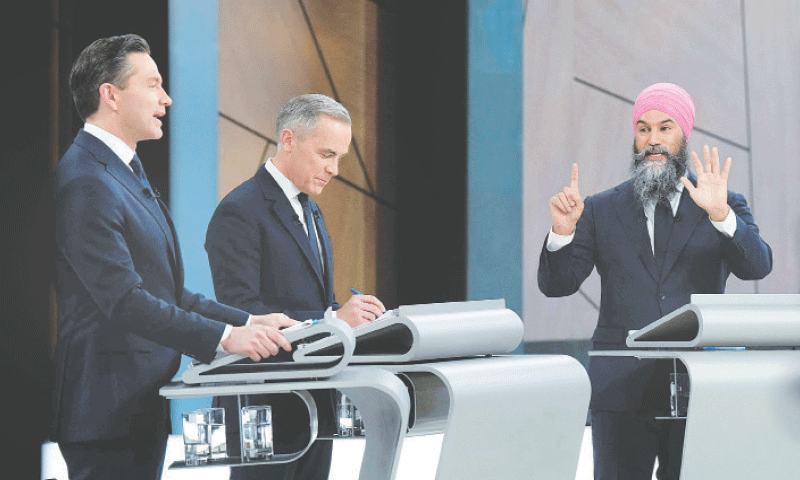

Canada elects a new government on Monday to confront annexation threats from the United States and deal directly with US President Donald Trump, whose trade war has defined the campaign.
The Liberal Party, led by new Prime Minister Mark Carney, looked set to lose easily to the Conservatives’ Pierre Poilievre until the US president’s attacks on the country sparked a sudden reversal in poll forecasts.
Carney, 60, has never held elected office and only replaced Justin Trudeau as prime minister last month. He had a lucrative career as an investment banker before serving as the central bank governor in both Canada and Britain.
Carney has argued his global financial experience has prepared him to guide Canada’s response to Trump’s tariffs.
He has also promised to revitalize internal trade and expand Canada’s economic opportunities abroad to cut reliance on the United States, a country Carney says “we can no longer trust.”
The United States under Trump “wants to break us, so they can own us,” he has warned repeatedly through the campaign.
“We don’t need chaos, we need calm. We don’t need anger, we need an adult,” Carney said in the campaign’s closing days.
Poilievre, a 45-year-old career politician, has tried to keep the focus on domestic concerns that made Trudeau deeply unpopular toward the end of his decade in power, especially soaring living costs.
The Tory leader has argued Carney would bring a continuation of what he calls “the lost Liberal decade,” arguing that only a new Conservative government can take action against crime, housing shortages and other non-Trump issues Canadians rank as priorities.
“You cannot handle another four years of this,” he said over the weekend.
Poilievre has critiqued Trump, but insisted ten years of poor Liberal governance had left Canada vulnerable to a newly hostile United States.
announced he would resign, the Conservatives led the Liberals by more than 20 points in most polls, and Poilievre looked on track to be Canada’s next prime minister.
But Carney replacing Trudeau combined with nationwide unease about Trump transformed the race.
Public broadcaster CBC’s poll aggregator on Sunday put the Liberals’ national support at 42.8 per cent, with the Conservatives at 38.8pc.
As with US elections, national polling numbers may not predict a result.
The performance of two smaller parties — the left-wing New Democratic Party (NDP) and the separatist Bloc Quebecois — will be closely watched.
In past elections, strong NDP performances in Ontario and British Columbia, and a good showing by the Bloc in Quebec, have curbed Liberal seat tallies, but polls suggest both smaller parties could be facing a setback.
Nearly 29 million of Canada’s estimated 41m people are eligible to vote. A record 7.3m people cast advanced ballots.
In the massive G7 country which spans six times zones, polls open at 8:30am local time (4pm PKT) in the Atlantic province of Newfoundland and Labrador.
Canadians will elect 343 members of parliament, meaning 172 seats are needed for a majority. The Liberals won a majority in 2015 but have governed with a minority since 2019.






